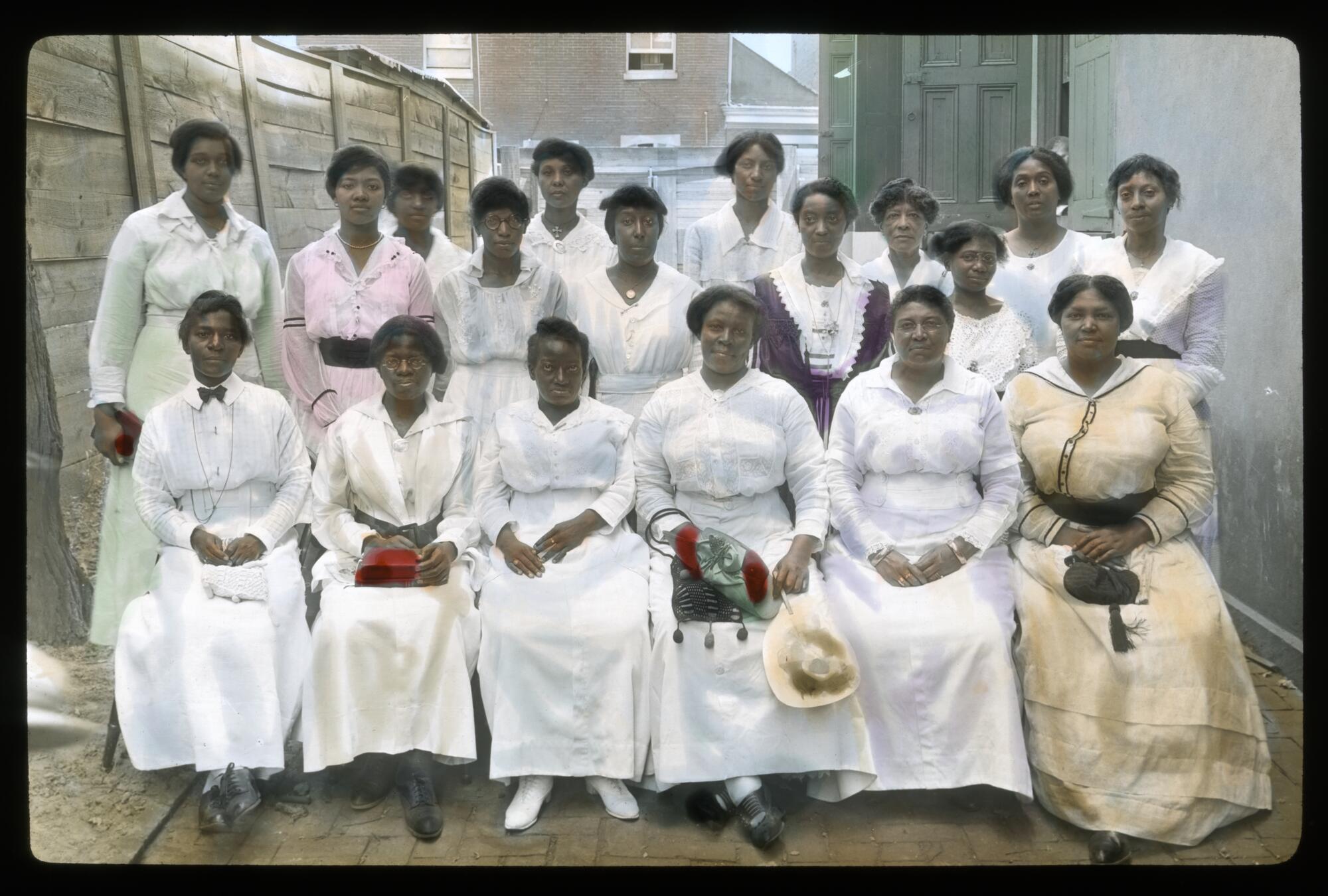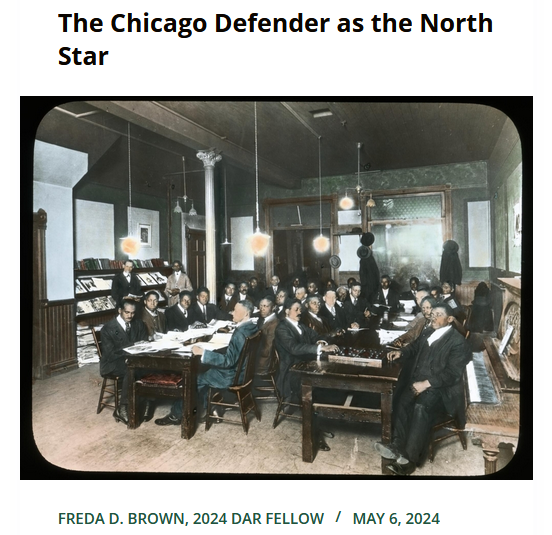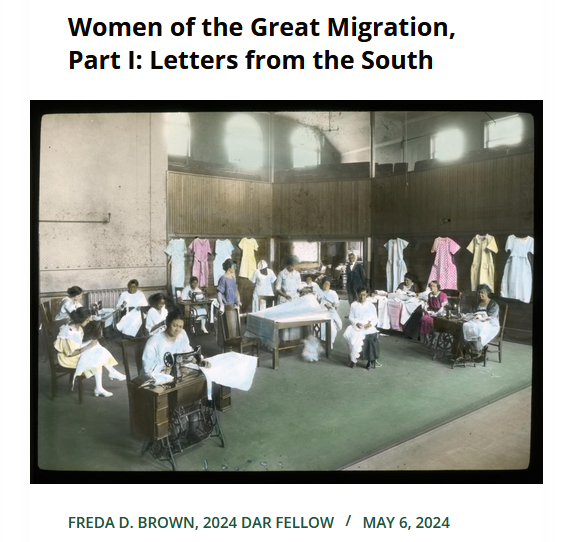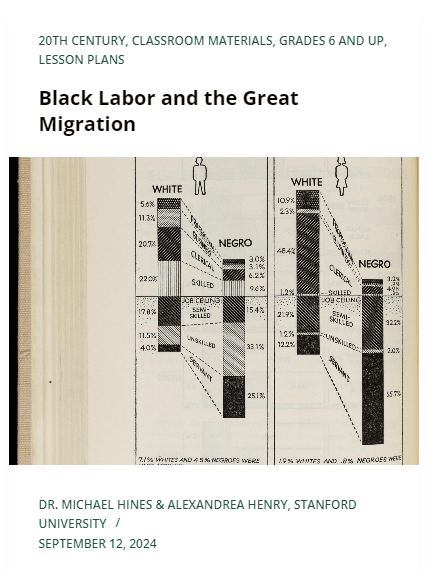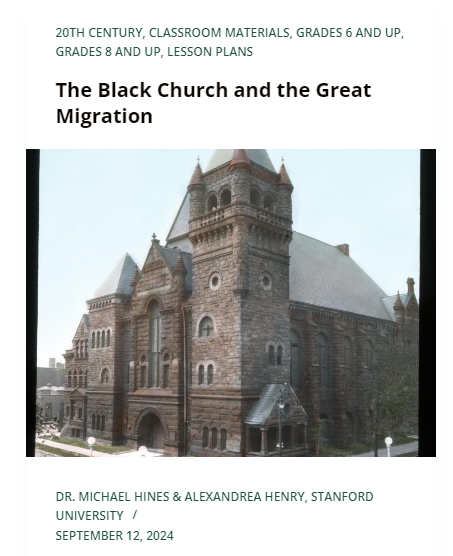Themes
African American History
Journalism
Race Relations
Women Journalists
Periods & Events
20th Century
Great Migration
Jim Crow
Skills & Documents
Close Reading
Newspapers
This lesson is one of a series of classroom materials about the Great Migration, some generously funded by the Chicago Chapter, National Society Daughters of the American Revolution. Find the rest in the Related Resources tab!
This is the third of three lessons by Mrs. Freda D. Brown, School Library Media Specialist and Journalism Instructor at Kenwood Academy High School, on The Chicago Defender and the Great Migration.
Lesson Series Context and Framework
The Great Migration changed the makeup of many major American cities, but the intricacies of how this movement impacted everyday citizens are often under-explored.
Add to that the crucial role journalists played in helping African Americans navigate their migration North and their lives upon arrival, and there is much to explore. In particular, The Chicago Defender, under the leadership of its socially conscious founder Robert S. Abbott, exhibited extraordinary leadership during this movement, by encouraging the move North, publishing stories about career opportunities in Northern cities, and even employing Black women journalists on the Defender staff.
These lessons will explore the lives of the men, women, and children who lived in the South, but desired to move North in pursuit of a better future. In particular, they will emphasize the extraordinary challenges young girls and women experienced when migrating north, and their experiences once they arrived in northern cities.
These lessons will also emphasize the remarkable women journalists who reported for The Chicago Defender and the intersection of journalism and activism during the Great Migration, demonstrated by women like Ida B. Wells-Barnett and Ethel Payne. These women used their pens to highlight the realities of the struggles of everyday life in America during the Great Migration, and particularly the challenges and experiences African American women and young girls faced.
Lesson Series Learning Objectives:
- Students will examine the role the Chicago Defender newspaper played in encouraging African Americans to migrate North in search of economic opportunities.
- Students will evaluate the unique contributions of African American women journalists during the Great Migration.
Lesson Series Essential Questions:
- What would it take for you to leave everything you knew behind?
- How did two waves of Black migration impact the landscape of major US cities?
- What role did African American newspapers play before, during, and after the Great Migration?
- What major contributions to American culture can be attributed to the Great Migration?
- Why are there so few records of migration stories in the American archive?
- What role did the Great Migration play in shaping the American Dream story?
- What role did women play in the Great Migration?
This lesson was produced through a generous annual fellowship for digital education on American Women’s History or Early American History funded by the Chicago Chapter, National Society Daughters of the American Revolution, 2024.
Materials – Available for Download in the Downloads Tab:
- A copy of the “Women of the Great Migration, Part II: Women Journalists” lesson
- Two Chicago Defender articles
- Article analysis student handout
Lesson duration: 50 minutes
Essential Questions:
- What role did women play in the Great Migration?’
- What unique challenges did African American women face during the Great Migration? How did they combat these challenges?
- How were African American women journalists responsible for capturing Black history through their work as writers on the front lines?
Learning Objectives:
- Students will be able to explain the role African American women journalists played in the Great Migration.
- Students will be able to explain the unique challenges faced by African American women during the Great Migration, and how they overcame them.
- Students will examine the structure and activities of African American women’s clubs and their work, and how they made racial uplift a priority.
Process
Review and Lesson Context (5 minutes)
The teacher will set the tone of this lesson by reviewing the work of activist Ida B. Wells, and how her work inspired Robert Abbott. Then, the teacher should note that there were other women journalists using their pens to promote racial uplift amongst African Americans, and other women, who through organized clubs worked strategically to help African Americans during the time of the Great Migration. For example, Wells founded the Alpha Suffrage Club in 1913, during the first wave of the Great Migration, as a way to advocate for voting rights for Black women, since she felt the National Suffrage Movement was largely exclusive of Black Women obtaining the right to vote.
Group Work (30 minutes)
Distribute copies of “The South at The Crossroads: Revolt, Exodus Change South,” by Ethel Payne to the first group, and “Activities of Women’s National Organizations” by Rebecca Styles Taylor, to the second group. Download pdf copies here: Teachers should reinforce that the focus of this lesson is examining the roles of women who lived and worked during the Great Migration. Particular attention should be paid to thinking about what their lives were like, what obstacles they faced based upon previous class study of the Great Migration.
Give each group of students 10 minutes to read and annotate their respective article.
After reading, each group will complete the handout below on African American Women Journalists during the Great Migration, using evidence from their article to demonstrate their understanding of how these writers used their platforms to highlight the need for action to uplift the Black race. (Click here for a brief, but powerful teaching on The Women’s Club Movement from Reconstruction to the early years of the Great Migration). Provide 20 minutes to complete this activity.
Wrap Up: Think, Pair, Share (10 minutes)
(More about doing a Think, Pair, Share activity here.)
Students will share their findings with a partner, and volunteers will share their responses and what they learned with the whole class.
About the Author
Freda D. Brown is the School Library Media Specialist and Journalism Instructor at Kenwood Academy High School in Chicago, IL. She received a Bachelor of Arts Degree in English Literature from Tennessee State University, a Master of Arts in Education from Roosevelt University, and a Master of Science in Library and Information Science from Dominican University. With 23 years of experience as an educator, Mrs. Brown specializes in connecting people with the resources they need to be successful, whether that is a book, database, or an individual. She lives in Chicago with her awesomely funny husband and her even funnier son.
This lesson supports the following Common Core learning standards:
Analyze and evaluate the effectiveness of the structure an author uses in his or her exposition or argument, including whether the structure makes points clear, convincing, and engaging.
Determine an author’s point of view or purpose in a text in which the rhetoric is particularly effective, analyzing how style and content contribute to the power, persuasiveness or beauty of the text.
Integrate and evaluate multiple sources of information presented in diverse formats and media (e.g., visually, quantitatively, as well as in words) in order to address a question or solve a problem.
Integration of Knowledge and Ideas: Integrate and evaluate content presented in diverse formats and media, including visually and quantitatively, as well as in words.
Determine two or more central ideas of a text and analyze their development over the course of the text, including how they interact and build on one another to provide a complex analysis; provide an objective summary of the text.
Analyze a complex set of ideas or sequence of events and explain how specific individuals, ideas, or events interact and develop over the course of the text.
Download the following materials below:
- Copy of the lesson “Women of the Great Migration, Part II: Women Journalists”
- Two Chicago Defender articles
- Article analysis student handout



